How did I test this? Yeah, it’s so secret I forgot about it myself! No, kidding aside, I didn’t and that’s why there’s a video on this as well.
Actually quite simple, continuous movement with the mouse and click. The latency measurements here were very interesting. But see for yourself!
Who would have expected that now? Well, I don’t, I must admit! Both NVIDIA Reflex and Radeon Boost reduce latency by 38% under dynamic conditions. But let’s look at more details first before I analyze and put this 58 to 60 ms into perspective.
NVIDIA with Reflex & Boost comes with only 118 FPS to a latency of 58 ms. Which is also reflected in significantly better 1% low as well as more constant frame times. AMD with Radeon Boost, on the other hand, sticks to the “more FPS equals lower latency” motto. Unfortunately, the 1% low and the frame times suffer a lot here, which I personally don’t like that much. However, the 60 ms that AMD Radeon Boost delivers here are still on the scoreboard. Wait, 218 FPS vs. 118 FPS, uh huh how now? Oh yes, there it was again – the topic: Sometimes less is more, in this case just better! Because despite 100 FPS more, AMD only manages to get within 2 ms (on average) of NVIDIA. But for this you have to have a close look at the three following slides and understand what these numbers mean!
The frame times of the Radeon card fluctuate extremely. While this looks pretty nice in the FPS….
… but looks a little different at second glance with the variances. What matters most is the dark green bar, which the Radeon doesn’t even manage. The very long light green bar of the Radeon represents the very fast successive ups and downs in the frame times, the shorter yellow and orange bars result from the higher FPS numbers.















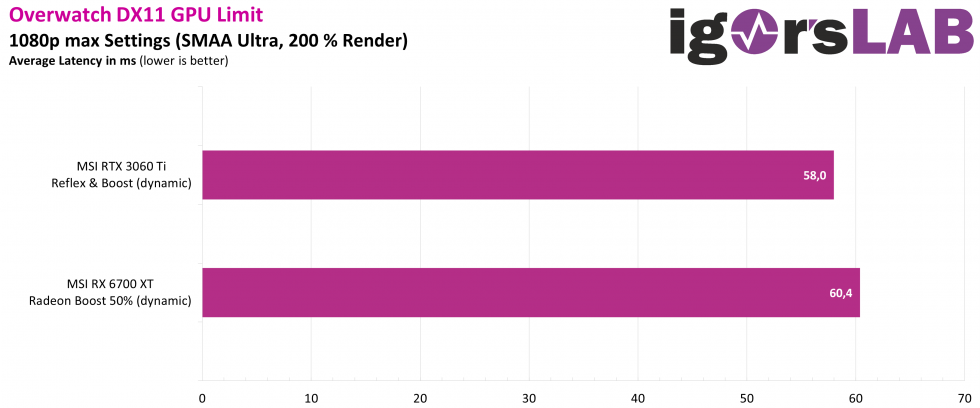
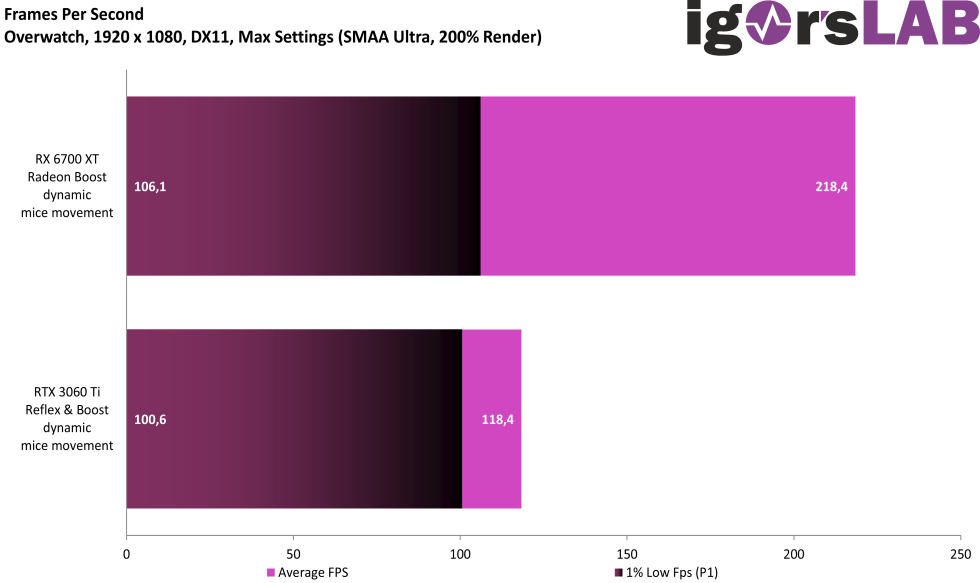
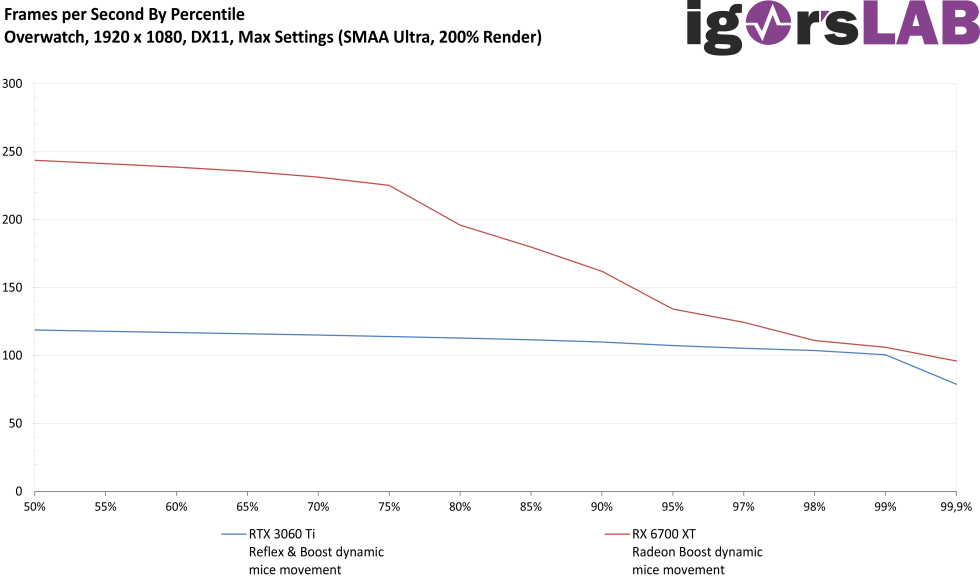
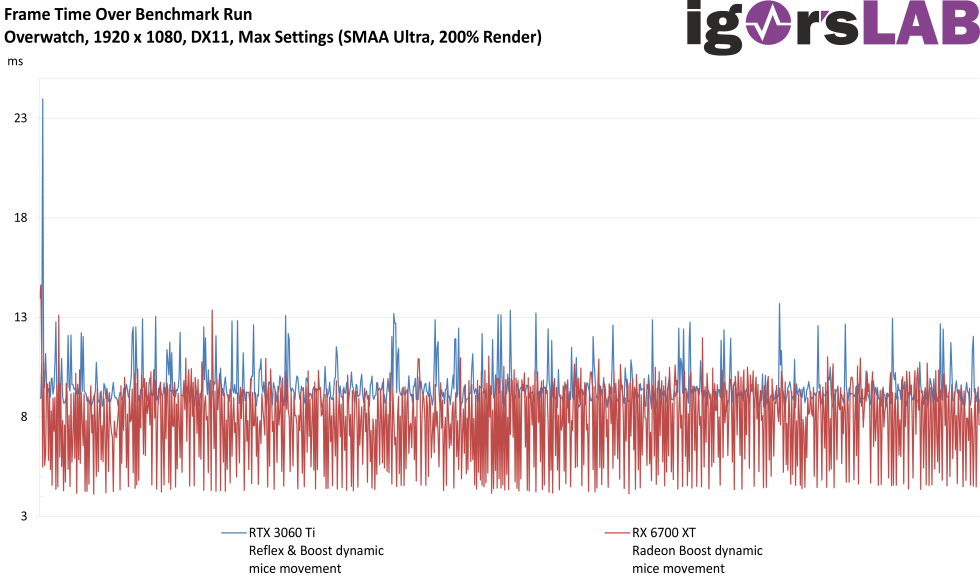
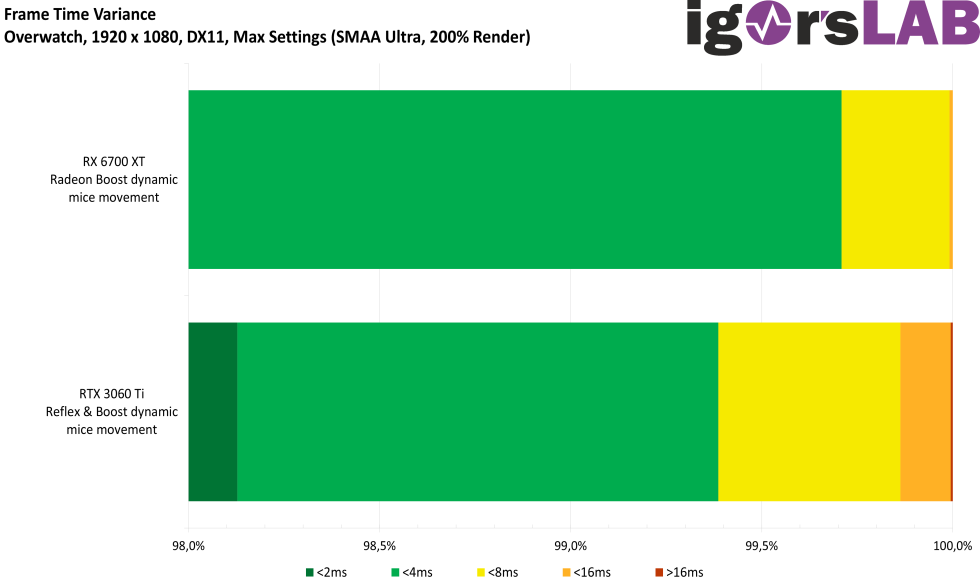


















Kommentieren